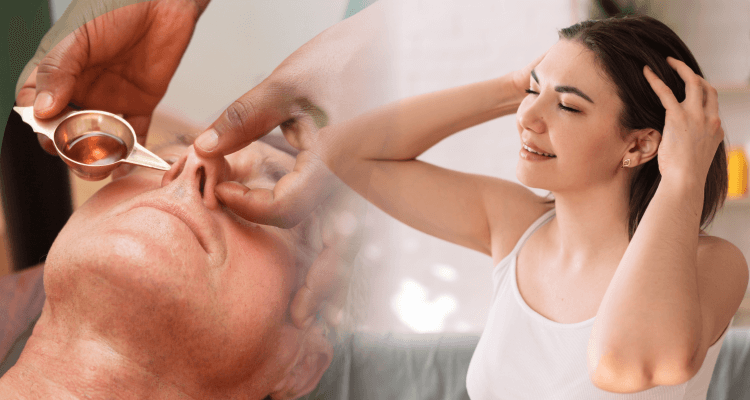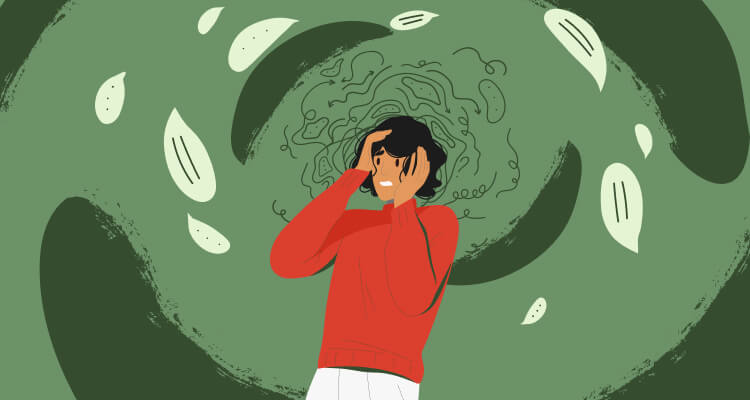Migraine is misunderstood and underestimated frequently, just like a headache, while it is more complex. Migraine negatively affects physical, emotional, and social well-being and quality of life.
Migraines manifest as intense, throbbing pain, often accompanied by sensitivity to light and sound, nausea, and visual disturbances. Physical exertion, bright lights, loud noises, or strong smells can worsen your migraine.
Chronic migraines can lead to a cycle of suffering, as individuals may lack insight into their condition and delay seeking appropriate treatment. This delay can exacerbate symptoms and increase the risk of other health complications.
The possible triggers of migraine include stress, drinking alcohol, caffeine, and consuming certain processed foods. Studies also suggest that sleep changes, weather changes, skipping meals, strong smells, and sensory stimulations such as bright lights trigger migraines.
Migraine global prevalence is 20.7% in women and 9.7% in men, with women being three times more susceptible than men. This prevalence underscores the urgent need for comprehensive management strategies to alleviate the burden of this condition.
Root Causes of Migraine
The causes of migraine are not fully understood. Genetic factors, environmental factors, and neurotransmitters like serotonin are said to play a role in the causation of migraine headaches. There are many triggers identified that induce migraine headaches:
- Sudden changes in weather or environment
- Too much or not enough sleep
- Strong odors or fumes
- Emotion
- Stress
- Overexertion
- Loud or sudden noises
- Motion sickness
- Low blood sugar
- Skipped meals
- Tobacco
- Depression
- Anxiety
- Head trauma
- Hangover
- Some medications
- Hormonal changes
- Bright or flashing lights
Conventional Management v/s Live Your Best Life Approach for Migraine Headaches.
The common treatment for migraines typically involves a combination of acute and preventive measures. Acute treatments aim to alleviate immediate symptoms and often include over-the-counter or prescription pain relievers like NSAIDs, triptans, and anti-nausea medications.
Preventive strategies, on the other hand, are designed to reduce the frequency and severity of attacks and may involve lifestyle modifications as well as medications like beta-blockers, antiepileptics, or CGRP inhibitors.
However, these treatments have limitations. Acute medications may not work for everyone and can cause side effects like dizziness and nausea, and overuse can lead to medication-overuse headaches. Preventive medications may take time to show effectiveness and may not work for everyone.
Additionally, identifying the right combination of treatments often requires a trial-and-error approach, which can be frustrating for patients. Therefore, a personalized approach to treatment is often necessary to effectively manage migraines.
The integrative approach of Live Your Best Life adds dimension to headache management, complementing conventional treatments. It helps to bridge the gap by providing alternative approaches to reduce reliance on painkillers, offering natural remedies that address root causes, and minimizing the need for pharmaceuticals.
The Ayurvedic concept of “Ardhavabhedaka” correlates with migraine. Ardhavabhedaka exhibits distinct features, including severe unilateral pain localized in areas such as the neck, eyebrow, temples, ear, eye, and forehead, which closely resemble migraine.
Ayurveda has a holistic approach to management rather than symptom-specific supplements, whether it is a migraine or any other disease. Understanding the root cause of the headache, identifying its triggers, and utilizing herbs with rasayana (antioxidant and anti-inflammatory) properties for the prevention of relapse is vital. By emphasizing lifestyle modifications, dietary changes, herbal treatments, and stress reduction techniques, Ayurveda aims to prevent headaches, promote overall health and well-being, and provide symptom relief—thus offering holistic solutions to restore balance and empower individuals on their journey to migraine wellness.
The Personalized Live Your Best Life Approach
Ayurveda’s distinctive strength lies in its recognition of the individual as a complete entity, not merely as a collection of symptoms. While conventional medicine tends toward standardized treatments for migraine sufferers, the Live Your Best Life approach acknowledges the clinical diversity that patients themselves often observe—that migraine triggers and effective interventions demonstrate significant interpersonal variation. Each patient’s physiological response pattern represents a unique clinical profile.
When you sit down with a Live Your Best Life health expert, they don’t just ask, “How bad is your headache?” Instead, they want to know the whole you: how you sleep at night, which foods trigger your headaches, how your body handles stress, and what makes your health unique to you. They’re looking for your personal patterns, not just treating a symptom and sending you on your way. This deeper conversation turns healthcare from a quick fix into a partnership where you’re truly seen and understood. It is holistic medicine that recognizes you as not just another migraine case, but as a person with your own health story that deserves to be heard.
Is Ayurveda a Myth for Migraine Care?
Ayurveda is neither a myth nor a magic cure. Ayurveda offers valuable insights, but it is important to remember that each person’s migraine experience is unique and deserves professional guidance, particularly for those with persistent or complex conditions. It is a broader approach to managing migraines. For those seeking sustainable relief beyond medication alone, Ayurveda presents a holistic, personalized approach that, when properly implemented with qualified guidance, may open doors to better well-being. Your journey toward healing deserves this balanced perspective.












